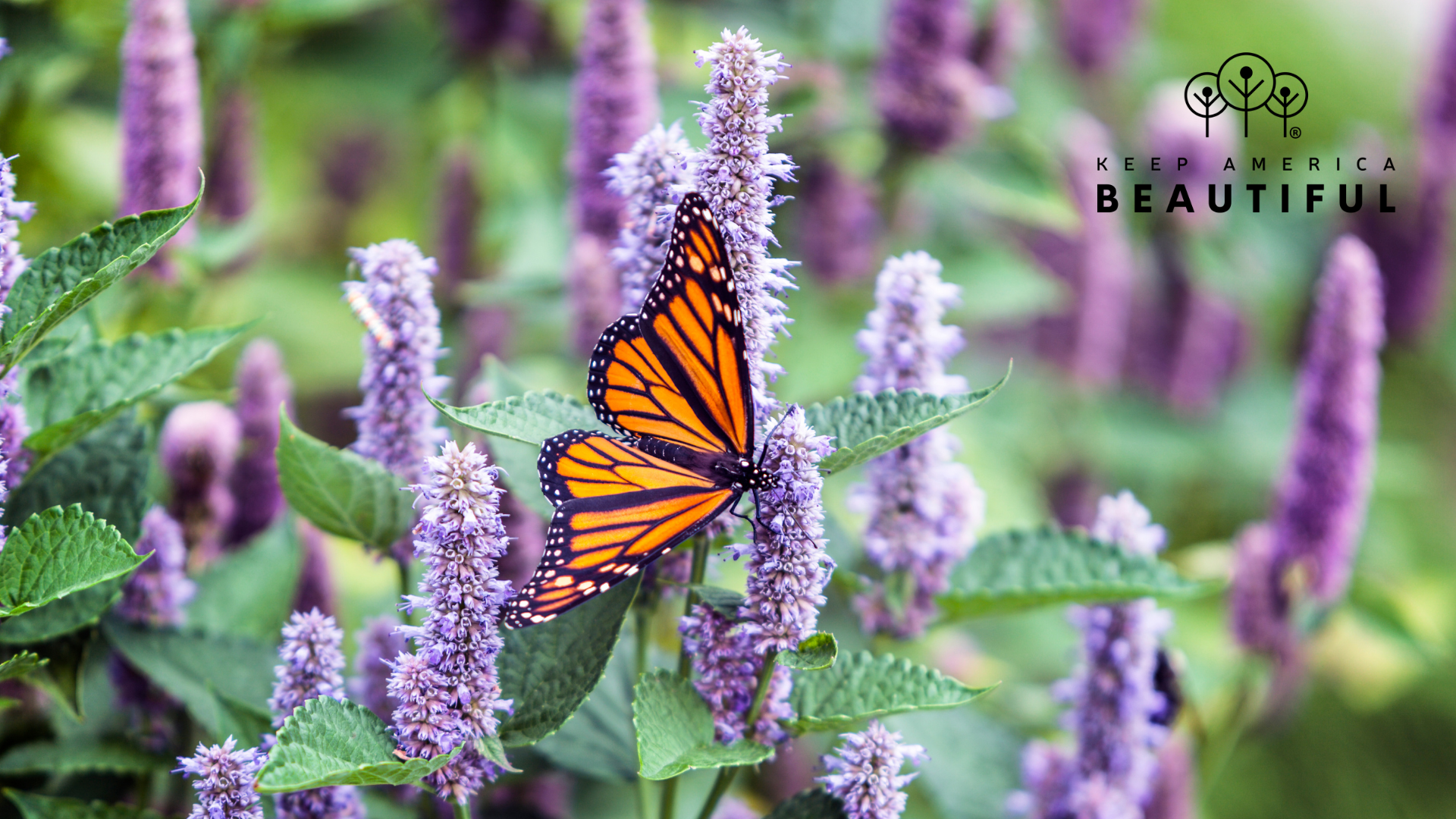Grow Something Good: Native Plants for People and Pollinators
This spring, give your garden a greater purpose. Whether you’re planting a single flower pot or rethinking your entire yard, choosing native plants is one of the most beautiful and powerful ways to make a difference.
Native plants don’t just look great. They’re low-maintenance, water-wise, and incredibly beneficial to the environment. These resilient species evolved alongside local wildlife, creating a deep, lasting connection that supports pollinators, protects natural resources, and brings life to your landscape.
Beauty With Benefits
Native plants are stunning in every season – offering blooms in spring and summer, vibrant leaves in fall, and seed heads or colorful bark through winter. With hundreds of species to choose from, you can design a space filled with unique colors, textures, and fragrances, all while celebrating the natural heritage of your region.
They’re also practical. Native plants thrive in a variety of conditions—from shady and wet corners to sunny, dry slopes—making them a smart choice for any space.
Less Work, More Impact
Because they’re adapted to local soil and climate, native plants need less watering, mowing, and chemical care. That means:
- Less time spent maintaining your yard
- No need for fertilizers or pesticides
- Lower water bills during summer
- Healthier soil and less erosion
Their deep root systems make them naturally drought-resistant, better at filtering rainwater, and more effective at slowing runoff before it reaches storm drains. That means less flooding, cleaner waterways, and recharged groundwater reserves.
And don’t worry about a perfectly manicured look – leaving seed heads through winter provides valuable food for birds, while stems trimmed to 18 inches offer safe overwintering spots for native insects. It’s a win-win for wildlife and your to-do list.
Native Plants by the Numbers
- The U.S. has lost 150 million acres of habitat and farmland to urban sprawl – and over 40 million acres are now covered in lawns, a monoculture that offers little food or shelter for wildlife (Audubon).
- It takes 6,000–9,000 caterpillars to raise just one brood of chickadees, highlighting the importance of native host plants in bird survival.
- Between 15% and 60% of native bee species are pollen specialists, depending on native plants to feed their young.
- Native plants reduce stormwater runoff and trap pollutants before they enter waterways.
- The average suburban lawn uses 10x more chemical pesticides per acre than farmland.
Create a Space That Gives Back
A native garden is more than just a collection of plants – it’s part of a larger ecological system. These plants:
- Provide food and habitat for birds, pollinators, and small mammals
- Store carbon and produce oxygen, improving air quality
- Support groundwater recharge and healthy soil
- Help prevent the spread of invasive species, protecting nearby yards and parks
Even a few native plantings can create vital stepping stones for wildlife in urban and suburban areas. And when neighbors join in, those small efforts grow into something truly impactful.
What to Plant
Check your region and USDA hardiness zone, but here are some top-performing native plants to get you started:
- Milkweed – Supports monarchs and other butterflies.
- Black-eyed Susan – Hardy and cheerful, attracts pollinators.
- Bee Balm – Bold color, great for hummingbirds and bees.
- Purple Coneflower (Echinacea) – Tough and long-blooming.
- Goldenrod – Supports pollinators into late fall.
- Wild Bergamot, Blue Vervain, and Joe-Pye Weed – Great for visual interest and pollinator support.
Even herbs like mint, thyme, and lavender are beneficial and easy to grow in containers or garden beds.
You Don’t Have to Start Big
According to the National Wildlife Federation, even transforming 70% of your yard to native plants can make a measurable impact—especially when neighbors and communities join in. If every gardener added just a few native species, we could rebuild lost habitat one garden at a time!
Not sure where to begin? Use tools like:
Beautify with Purpose
Planting native species isn’t just good for the planet – it’s a powerful way to take action right in your own backyard! It’s low-maintenance, eco-friendly, and full of natural beauty. And when you choose to plant with purpose, you’re doing more than improving your landscape. You’re helping your community thrive.
Every native flower, shrub, and tree you plant is a step toward cleaner air, healthier soil, safer water, and more vibrant local wildlife. It’s one of the simplest and most rewarding ways to #DoBeautifulThings for your neighborhood and the world around you.
Want to take your impact even further? Join the Greatest American Cleanup, a national movement to clean, green, and beautify communities across the country. Whether you’re planting a pollinator garden, revitalizing a green space, or simply spreading the word, your efforts matter.
Let’s grow something beautiful—together!
About Keep America Beautiful®:
Keep America Beautiful®, the nation’s leading community improvement nonprofit organization, inspires and educates people to take action every day to improve and beautify their community environment. Established in 1953, Keep America Beautiful® strives to End Littering, Improve Recycling, and Beautify America’s Communities. We believe everyone has a right to live in a clean, green, and beautiful community, and shares a responsibility to contribute to that vision. The organization is driven by the work and passion of 700 Keep America Beautiful® affiliates, millions of volunteers, and the collaborative support of corporate partners, social and civic service organizations, academia, municipalities, elected officials, and individuals. Join us on Facebook, Instagram, Twitter, Linkedin, and YouTube. Donate and take action at kab.org. MEDIA CONTACTS: McCall Vrydaghs Keep America Beautiful® communications@kab.org

